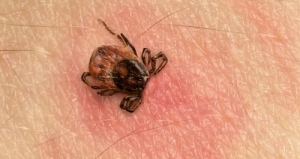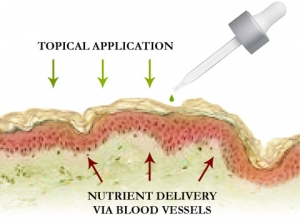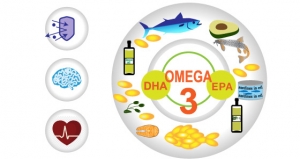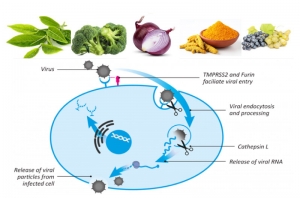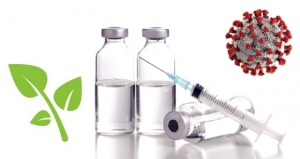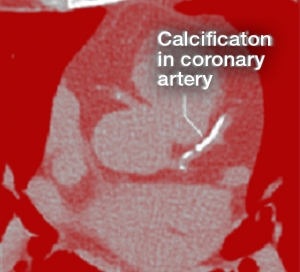Elijah Artman
In the last issue of the Health Science News Page, we discussed insect-borne diseases with a specific focus on Lyme disease. Lyme disease was first widely recognized in 1975 in Old Lyme, Connecticut, USA. It is a bacterial infection caused by a type of bacteria called Borrelia. It is transmitted to humans through the bite of a tick that feeds on other small animals, pets, deer, mice, birds, and squirrels carrying the bacteria.
Lyme disease starts with vague flu-like symptoms such as skin rashes, fever, muscle aches, and fatigue. Due to a lack of specific and reliable laboratory tests, the treatment is often delayed and the disease goes on untreated for a long time. In more advanced or chronic Lyme disease stages, people develop chronic arthritis, inflammation of the heart and other organs, neuropathies, sleep disturbances, cognitive impairment and other neurological symptoms including changes in some of the markers of autoimmune diseases. Oral and intravenous antibiotics are usually applied but their efficacy decreases when given in the later stage of infection. Moreover, many of the antibiotics are not effective due to wide-spread bacterial resistance.
As summer approaches and people start outdoor activities, the season also brings an increased exposure to insects and insect-borne diseases. According to the Centers for Disease Control and Prevention, insect-borne diseases in the US increased more than three times in the last decade. Ticks, mosquitoes, and fleas are the most common carriers of these diseases and they especially increase during longer and hotter summer days.
Lyme disease is one of the most common tick-borne diseases accounting for 3 in 5 cases of insect-borne diseases. It is found in more than 80 countries. In the US it is mainly found in the northeast, midwest and along the Pacific coast. Approximately 476,000 new cases of Lyme disease are diagnosed in the US every year, and close to two million people could be suffering from chronic Lyme disease.
COVID-19 is not the only pandemic threatening the world right now. Metabolic syndrome (a combination of obesity, high blood pressure, and high blood sugar) which has been rising for decades before COVID-19 deteriorates overall health making people prone to other acute and chronic diseases. According to the CDC, close to 50% of the adult population in the US already has high blood pressure and only 1 in 4 of them have it under control. Appropriately named as the “silent killer,” consistent high blood pressure damages multiple organ systems in the body. In addition to the increased risk of a fatal heart attack and stroke, hypertension is a cause of other debilitating conditions such as heart failure, kidney damage, and various eye problems including blindness. While there are a large number of antihypertensive medications, some of the most common ones are thiazide diuretics, calcium channel blockers, beta-blockers, and ACE inhibitors. Most of these drugs are useful only for the temporary reduction of hypertension and are associated with a wide array of side effects. A very recent clinical trial conducted on more than 300,000 adults revealed that prolonged use of thiazides, including hydrochlorothiazide, was associated with a significantly increased risk of skin cancer.1
The skin is not only the largest organ in the body with approximately 20 square feet of surface area, but also a mirror of our health. Our skin is the first barrier protecting us from pathogens and pollutants. It has a critical role in regulation of body temperature and elimination of many metabolic waste products. The appearance of our skin can tell us about excessive exposure to sunlight or environmental pollutants. It reflects whether we have had too much stress, a lack of sleep, are dehydrated or have consumed too much caffeine, sugar, alcohol, or cigarette smoke. The skin can indicate problems with the digestive, cardiovascular, and nervous systems functions, as well as hormonal imbalances and inflammatory conditions. Most of us are concerned with skin appearance for cosmetic reasons but some skin problems including oily or dry skin, acne, wrinkles, or age spots are indicative of poor health of the skin and internal organs.
Good health starts with knowledge and if we want to take good care of our skin it is important to know more about this organ. The skin is composed of three main layers. The epidermis, the outermost layer, contains keratin and melanin to strengthen and protect us from harsh sun rays. The dermis, the second layer, is enriched with blood vessels, nerves, and collagen fibers essential for skin nourishment, oxygenation, and firmness and elasticity. The bottom layer, the hypodermis, contains fat cells to maintain body temperature. The epidermal layer does not contain blood vessels and therefore it relies on nutrients supplied from the dermis. Yet wrinkles, age spots and other unwanted changes are first visible in the epidermis. This tells us that in addition to oral supplementation, the topical application of nutrients is an effective way to directly supply nutrients to this layer of skin.
The firmness and elasticity of the skin depends on its main components - collagen and elastin. Therefore, reduced production of and increased destruction of collagen and elastin accelerate the symptoms of aging. Healthy skin also needs optimum production of glycosaminoglycans and hyaluronic acid present in the ground substance that binds the dermal and epidermal cells in the skin. Low hyaluronic acid content impairs skin hydration, its structure and elasticity, and the ability to repair itself. Age-related decrease in growth hormone production is reflected by dull skin because of the decreased production of new skin cells and the accumulation of dead cells on the skin layers. This also increases melanin pigmentation which accumulates in small pockets on the skin appearing as brown patches or “sunspots.” These “age spots” can also be promoted by deficiency of micronutrients such as vitamins C and E, and the amino acids proline, lysine and arginine.
We can support our skin in a natural way. Vitamin C together with lysine and proline are essential for producing healthy collagen, and together with vitamin E can reduce free radical damage. Vitamin C itself helps to reduce oxidative stress, improve the skin damage caused by UV rays and inflammation, and decrease the risk of melanoma. Moreover, topical application of vitamin C can strengthen the skin immune barrier and has an antihistamine effect which helps to reduce itching and other complaints of allergic skin conditions. Research shows that the skin responds well to topical application of certain nutrients. These include jojoba oil, aloe vera, geranium, and dandelion extracts, and others that nourish the skin and have antioxidant properties making it appear youthful and healthy. While a healthy diet is critical for healthy skin, the topical application of specific natural compounds may provide extra support for a healthier and younger looking skin.
While there is a consensus that omega-3 and omega-6 fatty acids are “essential” for healthy body functions, there is a lot of confusing information surrounding their consumption from fish, fish oil supplements, and plant sources. Most people are concerned about the risk of environmental pollutants and heavy metals present in fish. However, they quite often miss the fact that the types of omega-3 fatty acids in fish versus the plant sources are not the same.
As COVID-19 continues people turn to using various dietary supplements to support their immune system. Omega-3 is one such candidate that has multifaceted health benefits. Well known for its benefits in memory boosting and learning, omega-3 fatty acids are important in optimum function of the nervous, cardiovascular, immune, and respiratory systems.
Omega-3 and omega-6 fatty acids are polyunsaturated fatty acids and are considered “essential fatty acids” because humans cannot produce them in the body. They are needed for optimum absorption of fat-soluble vitamins A, D, E, and K and help to maintain the structure and integrity of cellular membranes.
More than a year after the emergence of COVID-19 the world is still at a standstill facing rapid spread and new mutations of SARS-CoV-2. Many countries are struggling to have any grip on this pandemic and dealing with scarcity of new vaccines. Despite implementing preventive measures like hand washing, masks, and social distancing, the daily infections and deaths attributed to COVID-19 continue to rise.
Worldwide, 2.2 million people died of this infection with upwards of 104 million COVID-19 cases. Drastic lockdowns threw millions of people into extreme poverty, hunger, and malnutrition, and due to lack of access to nutritious food, more people have compromised immunity, thus increased susceptibility to infections. Although pharmaceutical companies are racing to produce drugs and anti-SARS-CoV-2 vaccines became available, their efficacy is now being questioned with rapidly mutating coronavirus variants. It is a well-known fact that people with pre-existing conditions such as diabetes, heart disease, and cancer have impaired immunity and are prone to serious complications from COVID-19. In this critical situation, several clinical trials have been conducted with vitamin C and other nutrients in COVID-19 patients, some with promising results. Health care providers also turned to natural approaches to improve immunity and curb the spread of infections.
As the world’s hopes for the end of the COVID-19 pandemic rely on the new vaccines there are still multiple issues regarding long-term safety of the experimental genetic-based vaccine technology. Currently, between the two available vaccines, from Pfizer/BioNTech and the other from Moderna, both are based on the introduction of a viral messenger RNA (mRNA) into the cells. These vaccines use a synthetic version of the mRNA which a virus uses to build its infectious proteins. The human cells read RNA as instructions to build those virus proteins which then are detected by the immune system and trigger an immune response against the virus. On the other hand, the DNA vaccines (some of which are still in the clinical trials) use weakened viruses, e.g. the modified chimpanzee adenovirus, to transport the coronavirus genes into the human cells, and stimulate the immune response. The vaccines from Johnsons & Johnson, the University of Oxford, and Russia’s Sputnik vaccine are some examples of adenovirus-based DNA vaccines.
Chemotherapy drugs are considered standard cancer treatment. Despite their being used for over seven decades - cancer remains a second leading cause of death. It is common knowledge that chemotherapy drugs are highly toxic and trigger multiple side effects ranging from nausea, diarrhea, and hair loss to decreased immunity and damage to vital organs. Many of the chemotherapy drugs have been labeled as carcinogens, however, they are still used as the mainstay of treatment in cancer patients. It is estimated that chemotherapy itself is the cause of death in 30-50 percent of patients in some hospitals within the first month of initiation of the treatment.
The pharmaceutical industry has successfully made us believe that cholesterol is an undesirable and harmful substance in the body and the lower the cholesterol, the better it is for our health. Statins, the cholesterol-lowering drugs, are the most prescribed drugs worldwide. In addition to decreasing cholesterol, there are also claims of statins having various cardiovascular health benefits. At least 200 million people worldwide are prescribed statins such as lovastatin, atorvastatin, simvastatin and others that are sold under different brand names. However, despite the ever-increasing prescriptions for statins, cardiovascular disease is escalating and continues to be the leading cause of death.

